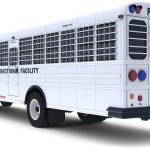Westend61/Getty Images: Illustration by Issiah Davis/Bankrate
Key takeaways
- Equipment costs can range from $500 for small items to $500,000 for construction or manufacturing equipment
- The cost of an equipment loan depends heavily on the equipment being purchased, the creditworthiness of the business and the interest rate set by the lender
- Down payments can add significant upfront costs to an equipment loan but may lower the interest rate and save money in the long run
Equipment loans come with a variety of costs that influence the total cost of borrowing — including the down payment, appraisal fees and loan interest. The main cost is the equipment’s purchase price since that will determine the loan amount.
Here’s a look at each of the influencing factors and how they affect the loan cost in detail.
Cost of equipment
The cost of buying equipment varies considerably depending on the industry you’re in and the equipment you’re buying. Equipment costs could range from $500 for small items like photography equipment to $500,000 for construction or manufacturing equipment.
Lease vs. own
Equipment leasing lets a business rent equipment from the leasing company for a set term, like three years. The business makes monthly payments and adheres to any conditions in the lease. Yet, unlike a business loan, the leasing company retains ownership of the equipment unless it offers a buyout feature at the end of the lease.
If a business buys or finances equipment, it will require more money upfront than a lease. But the business builds equity and can sell the equipment when it’s time to upgrade.
| Lease | Finance | Buy | |
|---|---|---|---|
| Initial costs | Low or no down payment | Down payment may be required, such as 20% | Must pay the total cost upfront |
| Monthly payment | Potentially lower than financing | Potentially higher than leasing with interest costs | None |
| Ownership | Leasing company owns, unless buyout at end of lease | Business owns, but lender can seize if loan defauls | Business fully owns |
| Maintenance and repairs | May be included or added for extra cost | Business is responsible | Business is responsible |
| Cost of upgrading | May be more affordable for businesses needing new equipment | Works well for equipment kept long term | Works well for equipment kept long term |
Creditworthiness
Most lenders have relaxed credit requirements for commercial equipment loans. Many of the best equipment loans accept credit scores as low as 600. Some may even be willing to work with business owners with even lower credit scores.
Since equipment loans are secured by the equipment as collateral, lenders also offer low rates starting around 5 percent to 6 percent.
Can you finance equipment with bad credit?
Yes, equipment loans are some of the easiest to qualify for with bad credit. Online lenders often consider factors outside of credit scores, such as the type of loan, the business’s industry and financial statements like accounts receivable, accounts payable and profit and loss.
Businesses with bad credit will have to settle for higher interest rates, which could go as high as 25 percent to 35 percent or higher.
Bankrate insight
Loan term
Most equipment loans offer repayment terms from 12 to 60 months, though some lenders go up to 84 months. The repayment terms are designed to mirror the lifespan of the equipment.
Choosing a short repayment term works in your favor because there’s less time for the equipment to break down and need replacement. Short terms also mean paying less in interest.
For example, if you finance $50,000 of equipment for five years with 9 percent interest, you’ll pay $12,275.07 in interest. The same equipment financed for three years will cost you $7,239.52 in interest. The shorter term will have higher monthly payments but would save you over $5,000.
Bankrate insight
Fees
Equipment loans are a straightforward type of business loan that don’t require many fees outside common business loan fees. Some fees you might see on your loan agreement:
- Origination fee. Initial cost charged to review your loan application. Often between 2 to 5 percent of the loan amount.
- Appraisal fee. Fee to determine the true value of your equipment. Could cost a few hundred dollars to appraise one or two pieces of equipment or several thousand dollars to review multiple types of equipment.
- Documentation fee. A generic administrative fee used to cover the costs of processing a loan. Usually a flat fee, such as $150.
Down payment
Many lenders require a down payment between 10 percent to 20 percent of the loan amount. If you financed $50,000 of equipment with a 20 percent down payment, you’d need to put $10,000 down for the loan.
The down payment can add significant upfront costs to an equipment loan. But it might lower your interest rate, saving you in the long run.
Bottom line
The cost of an equipment loan depends heavily on the equipment you’re buying as well as your creditworthiness as a business, among other factors. The price of the equipment is directly related to the amount you’ll borrow for the loan, and the interest gets calculated by that principal loan amount.
Then, the lender will set an interest rate based on your cash flow and credit history. The higher the interest rate, the more you’ll pay in interest over the life of the loan. In general, equipment loans tend to offer lower interest rates than other loans since they’re secured by the equipment.
Frequently asked questions
-
Both financing and paying cash for a semi truck have benefits and drawbacks. Financing helps you buy the truck with less upfront cost, while paying cash for the truck avoids interest and gives you full ownership. But not everyone has the cash on hand to shoulder the entire cost of a semi truck, which can reach over $160,000.Most semi-truck loans range from 12 to 60 months, but some lenders offer longer repayment terms if you need it. Due to the wear and tear on a semi truck, it’s better to get the shortest repayment term that you can manage.
Yes, you can finance a semi truck without a CDL, but it depends on the lender. Since driving a semi truck requires a license, banks will either want to know whether the truck owner has a license or will be hiring other drivers.
Read the full article here
















